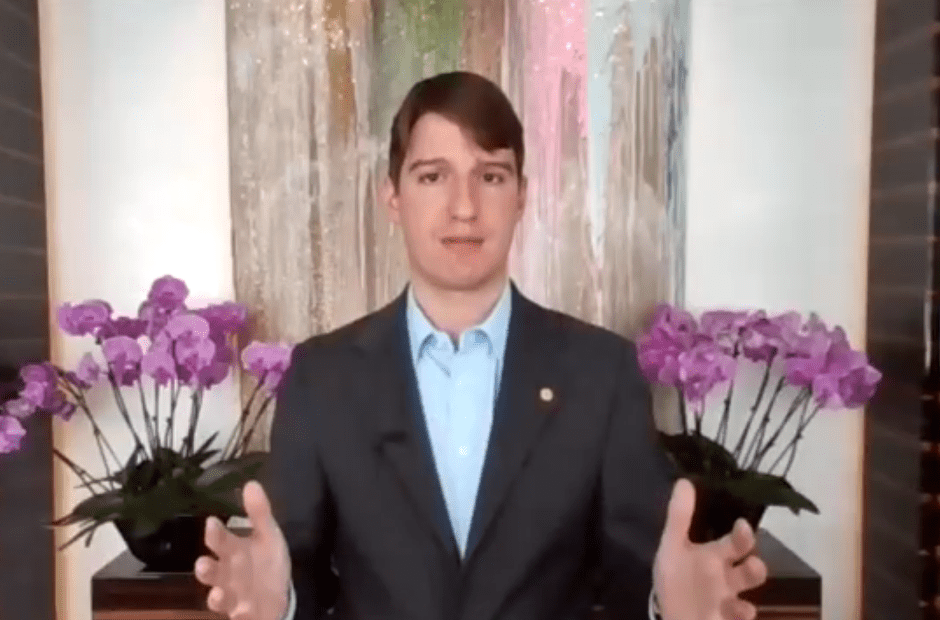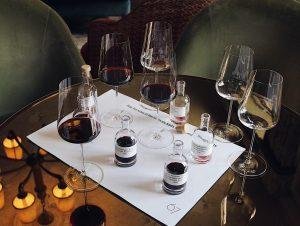
На сайте используются cookie файлы
The site uses cookie files
Данный сайт имеет возрастное ограничение!
This site has age restrictions!
Я подтверждаю, что мне, увы, уже давно исполнилось 18 лет
Drinks+ joined the session of the ASI Best Sommelier of the World 2019 Marc Almert about virtual tastings future at the Wine Paris & Vinexpo Paris 2021.
Marc Almert, ASI 2019 World’s Best Sommelier and Chef Sommelier Baur au Lac & Baur au Lac vins, in partnership with the International Sommelier Association (ASI), shares his personal experiences on virtual wine tastings at the Wine Paris & Vinexpo Paris 2021. A focus of his speech was placed on ideas, insights, and best practices, as well as tackling the question: “Are virtual wine tastings here to stay or will they disappear together with the pandemic?”

From a consumer side, there are several forms of wine tastings. The easiest would be the organizer sells wine that the consumer have with him. Another form is a tasting as a host, for example, a pre-event sale on a private basis via a wine distributor or via a winery. Besides, there is a public tasting in form of an Instagram live talk, or a Zoom webinar streamed on Facebook. Trade tastings have the same technical setup, but the level of presentation is different. Finally, there are tastings that appeal more to emotions rather than just selling wine. For example, wine tastings around Christmas time replace classical Christmas parties where wine is a connecting medium to the concept of being together.
According to the study on some Californian wineries, 52% were increasing a digital marketing budget and 22% of them are planning to employ staff dedicated to digital marketing and online events. This is a small indicator that digital tastings are here to stay even beyond the pandemic. However, what kind of tastings is another question.
Based on the questionnaires on Swizz wine market, more than 60% of people attending the online tastings have as a key motivation to learn and to taste something new.
What are the edges of hosting online tastings?
Marc Almert names traveling costs on behalf of the person or organization hosting the tasting as one of the biggest advantages.
It is easier to get lots of people together also quite spontaneously. If you organize it on a premise tasting, you will probably need a couple of weeks to send invitations, deal with cancellations and make sure you have a suitable venue with enough space. Downside of that is that you are limited to one market, you usually can invite only local customers from a country. But in a virtual tasting depending on the time slot you choose you can theoretically invite the whole world to show your new product or project.
Public tastings such as an Instagram live session or a Zoom webinar help to reach a younger demographic. This type of consumers are not willing to attend a classic table tasting or a wine and dine event but open to follow one of the influencers or journalists they look up to. Online tools provide a huge reach which is impossible to get offline.

Online tastings challenges
Motivating people to attend a tasting is getting challenging. A private customer may receive an email or a newsletter from a local wine shop that he has a trust relationship with to attend its virtual tasting.
Based on the survey conducted in Switzerland, people consider the body formats to be too large (75 cl or sometimes half a bottle) for home tastings. At the same time, almost the same amount of people say they get not enough wine meaning the quantity of samples. In the winery or wine and dine, 8 to 15 different kinds of wine are likely to be tasted while in online wine tastings for private customers, usually 3 to 6 bottles are tasted.
Apart from them, private customers go to tastings as something social to visit new places, to see a person standing next to vines, etc. This whole experience can only partially be recreated through the camera.
Another challenge is to cut through the noise. There is so much an offer that it becomes difficult to fill this offer. That is why organization of online tastings needs extra attention to make sure people will be interested and motivated to spend some money and time on it.
As Marc Almert remarks here: “I believe what we will see disappearing are the so-called entry-level tastings which try to get you by a cheap price offer because those are usually the customers who are not too loyal, and industry educated. They just want to have nice time with nice alcohol but don’t really care what kind of wine, spirit, or beer it is.”

The case of 67 Pall Mall, a private members’ club for wine lovers in London, that could not welcome customers throughout last year, is representative. They created a series of online tastings on a very high level not only technically by setting up the studio, but also by rebottling high-quality wine and inviting great hosts, masters, sommeliers, and winemakers. Some of the tastings costed several thousand pounds. In fact, that proved to be so successful that they are about to launch 67 Pall Mall TV which will be a mix of recorded live tastings with small bottle samples. It shows that premium, which is harder to reach on the daily basis, is on a higher demand. It does create an emotional connection as a once in a life experience unlike entry level tastings.
Costs themselves can be a challenge. The costs in general for hosting virtual tastings are lower, but the costs per person participating are much higher – shipping cost, customs cost. The more people you send your packages the higher the cost is.
And wine rebottling challenge comes along with this. Oxidation or overheating of wine may occur during the transportation. Therefore, it might spoil a customer experience as a whole.
So, Marc Almert predicts that virtual tasting will stay on the market but rather in its premium segment. Wine trading can be expected to initiate brand building on Instagram which is still quite new to the wine world. More people will consider online tastings as a mean of staying in touch, presenting new products, new vintages, and projects. What audience will stay? Either the very top premium fine wine collectors or the younger demographic.